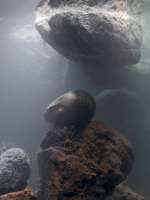Abstract
The work of Pierre Huyghe since the early 2010s poses myriad challenges for art-historical conceptualizations of site, spectatorship, and medium after minimalism. Huyghe’s work is nothing if not complex. From earlier engagements with “spectacle” through films, performances, and installations, it has turned toward the implementation of increasingly complex self-regulating environments. These projects answer to but also resist available critical interpretation. Situating and ultimately dispersing the discrete object of art into hybrid networks of organic and nonorganic elements—whose interplay perpetually instigates exchange, circulation, and modulation—they generate (seemingly) autopoietic systems. These systems venture far beyond the parameters of landscape and architecture that still delineated, albeit it by means of negation, the “expanded field” of sculpture four decades ago.
Taking up Eric de Bruyn’s prompt, I argue that Huyghe’s more recent projects—especially After ALife Ahead (installed at Skulptur Projekte Münster in 2017)—epitomize the “ecologization” of contemporary art. At the same time, however, those works also resist some of the apodictic claims made by theories of a “general ecology” and related discourses. In this sense the following remarks are not intended to announce yet another “turn” in contemporary art but to consider an increasingly prominent, if thus far undertheorized, current in artistic practice.


